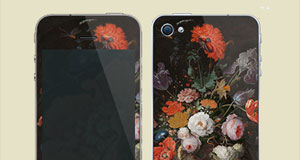…; ? collection Landgraves (and later Kings) Von Hessen-Kassel, Kassel; ? Hessisches Landesmuseum, Kassel;{Note RMA (Inventory Book): _Zou afkomstig zijn uit het museum te Kassel en verkocht aan de kunsthandelaar Bohler_ [sic] _te München_ (Said to have come from the museum in Kassel and sold to the dealer Bohler [sic] in Munich). Yet inquiries at the museum produced no evidence of the statue ever having been held in its collection. Nowhere is it listed in the _Inventarbuch_ of the kings of Hessen-Kassel from 1881. My thanks to Dr Antje Scherner, Sammlung Angewandte Kunst, Museumslandschaft Hessen Kassel (written communication 4 and 9 September 2015).} from the dealer ‘Alte Kunst’, Stuttgart, acquired by the dealer J. Böhler, Munich;{Written communication Dr H.R. Weihrauch, 1952 and Note RMA (Inventory Card).} from whom, acquired by the dealer Charles Albert de Burlet, Berlin and Basel, by 1930;{In 1930, the bronzes was in the possession of the Dutch dealer Charles Albert de Burlet (1882-1956) in Berlin. This is conveyed in a letter written by the art historian A. Staring, on behalf of the Vereeniging Oranje-Nassau Museum, addressed to De Burlet, dated 19 February 1930 (in Object File), in which he stated his belief that the bronze was a portrait of William of Orange, but that his fellow colleagues expressed little support for his vision. He indicated his desire to purchase the bronze for his museum, but that he was unable to make the necessary financial arrangements, in part due to the doubt concerning the identification. See also J. Leeuwenberg with the assistance of W. Halsema-Kubes, _Beeldhouwkunst in het Rijksmuseum_, coll. cat. Amsterdam 1973, no. 229; M. Kalusok in H. Borggrefe et al., Moritz der Gelehrte: Ein Renaissancefürst in Europa, exh. cat. Lemgo (Weserrenaissance-Museum Schloss Brake)/Kassel (Staatliche Museen Kassel, Orangerie) 1997, p. 223.} from whom, fl. 2.500, to the museum, 1948
Bibliography and list of abbreviations for the provenance (pdf)


